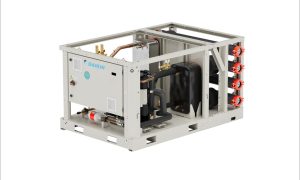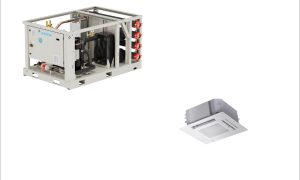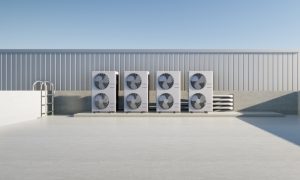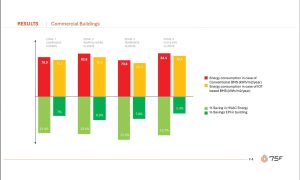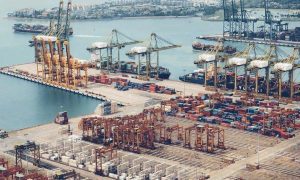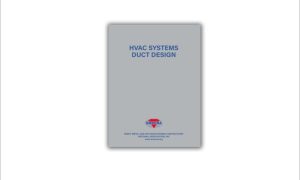A thermal envelope is the key element of an energy efficient home. If the thermal envelope is not sealed correctly, the HVAC system ends up working overtime to cool or heat a building.
India is home to an extraordinary variety of climatic regions, ranging from tropical in the south to temperate and alpine in the Himalayan north. India is placed on the 8th position in terms of ranking, amongst the hottest countries. Here, the average temperature in summer is around + 32 °C, whereas, in winter temperature falls slightly to around + 16 °C. In most part of India summer is very hotter than ever and winters are cold enough, which gives immense opportunity to save on Electrical power consumption in running HVAC & R systems.
Today we hear jargons like Green Buildings, LEED certification, carbon footprints, energy efficient equipment and many more. Our focus has always been on designing building property where we can achieve Net-zero. To achieve Net-zero, we integrate various technologies such as Inverter based Air-conditioners, EC fans, heat recovery wheel, generate energy through solar panels, etc.
We give more importance in creating and designing energy-efficient equipment and technology which are primarily focused in HVAC & R designed buildings. But one should also give importance to support systems to these equipment’s and one of them is Thermal Insulation which is applied over supply and return transport lines and over Building envelope.
Thermal Insulation in various forms like wool, foam, wood and other types were there since age old times. The last 150 years saw the technological gains made to produce Glasswool, Rockwool, polystyrene, poly urethane foam, Flexible elastomeric foam, Foam glass and other developments around world basically to comfort the residents of Cold places due to vagaries of nature in India; and then adapted to industrial applications and then came the boom in Europe, United States, Middle east and then far east.
Today, global Insulation market size is valued more than 50 Billion USD, worth of consumption and is still growing year on year. Thermal insulation requirements are backed in several countries by mandating a legislation to cut the energy costs, with rebates to consumers and still growing as it has become a necessity. The market growth is driven by an increase in customer awareness about the energy and environmental conservation.
India, infusion has been slow but steady in many segments. But the real consumption has still to come for real growth to understand it’s not an addon item but a necessity in the crying need of rising energy costs to conserve and economise this vital universal benchmark called energy. Mere presence of government legislation and auditing bodies to do outdated checks without an intention, is pointless. India’s consumption of insulation is about 5 billion USD, just imagine a country of 1.4 billion population, 25 percent of population consumes around 8 percent – 10 percent of insulation.
If implemented and monitored in right direction, the insulation usage percentile (%) could further amplify by another 10 percent. We hope and pray for this miracle when it happens, the concept is simple – “Thermal insulation.”
Thermal insulation creates thermal comfort inside the houses by keeping the temperature in suitable condition. It’s is a product which gives you energy saving simply just by applying over the components at differential temperature. It also creates a barrier between the warm air inside the house and the cold air outside and vice versa. The better this barrier, it is the less energy the house needs for cooling and heating. It doesn’t require any additional maintenance cost or expenses till its service life once applied.
The application requirements of most building envelope, thermal insulation products include appropriate detailed design, good workmanship and appropriate product selection, handling and installation methods. Therefore, capacity building, such as workshops to train design professionals and construction work forces in these areas are required.
In an Un-insulated home, around 35 percent of heat gain is through the walls and 25 percent is attained through the roof. The remaining 40 percent is achieved through the doors, windows and floor. Thermal insulation is an important technology to reduce energy consumption in buildings by preventing heat gain/loss through the building envelope. These materials have no other purpose than to save energy and protect and provide comfort to occupants. They come in various forms, shapes and applications of thermal insulation, are commonly used for building envelopes– i.e., floor, walls and roof. These include industrial insulation products and the application of natural elements as thermal insulation.
Building Envelope is the physical separator between the conditioned and unconditioned environment of a building including the resistance to air, water, heat, light, and noise transfer. The building envelope usually consists of its roof, sub floor, exterior doors, windows and exterior
walls. Other types of anomalies that can be detected are thermal bridging, continuity of insulation and air leakage. However, this requires a differential temperature between the inside and outside ambient temperatures.
Every home has a thermal envelope. The thermal envelope is basically any structure in your home that separates the air inside your home from the air outside. This includes anything intended to keep the air inside such as insulation, windows, floors, outer walls, and outside doors. The thermal envelope’s only purpose is to prevent heat transfer from the interior of a building to the exterior in winter and vice versa in the summer.
A thermal envelope is the key element of an energy efficient home. If the thermal envelope is not sealed correctly, the HVAC system ends up working overtime to cool or heat the home, because the air is just flowing through those cracks in the envelope and leaking outside. This can lead to reduced efficiency of the overall HVAC system, reduced indoor air quality, reduction in the system’s lifespan, and increases in utility costs.
In developed and industrialised countries, building codes include requirements to safeguard minimum acceptable insulation levels for building envelopes, and thus provide the opportunity for deploying the application of thermal insulation technologies. However, this is usually not the case in many developing countries, especially least developing countries and remote rural areas. Therefore, a critical factor leading to large scale implementation of thermal insulation in these countries is to put in place supporting policies, both incentive and mandatory measures.
Furthermore, as an overall quality control measure for building in extreme climatic conditions, it is recommended to have building envelope commissioning with attention paid to thermal insulation, especially in larger-scale buildings. Roof insulation, however, is applicable in all climate regions, including the hot tropical bell. Roof insulation has generally been accepted as a “proven energy conservation solution”.
Building envelope thermal insulation products have been widely used in temperate regions. In many developed and industrialised countries, thermal insulation is a regulatory requirement for energy efficiency and occupant health purposes, which provide a fairly constant market for the thermal insulation manufacturers.
Thermal Insulation should not be a choice or an option. People carry a perception that Thermal Insulation is additional cost on their CAPEX. Rather they should think that by applying right product with very minimal incremental cost on the project, one can save on their OPEX. This will only come when apex authorities and government cabinet policy come up with stringent norms on energy saving by applying Thermal Insulation to building envelope and equipment and its components.
_________________________________________
Authored by
Mr. Hiten Harish Patel – IGBC AP.
Thermal & Acoustic Insulation Expert.
Cookie Consent
We use cookies to personalize your experience. By continuing to visit this website you agree to our Terms & Conditions, Privacy Policy and Cookie Policy.






